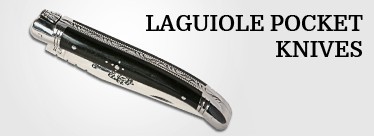- History
- Technical Questions
- To know a Laguiole
- Laguiole upper parts details
- The bladestop
- From steel bar to knife
- Closing systems for pocket knives
- How to sharpen your knife ?
- Sharpening stones
- Unkeep of folding knives
- Upkeep of your kitchen knife
- Cutlers adresses
- Stainless steel and carbon knife
- The art of shaving with the straight razor
- Upkeep of straight razor
- Materials
Materials for handles

Precious woods
Desert iron wood, a wood with knots reminiscent of butterfly wings from the deserts of America.
Burl woods: Amboina wood, thuya burl woods, maple, birch wood or evergreen oak burl.
Bog-oak, or Morta, petrified wood from peat-bogs.
Fossilised mammoth tooth and shell
These mammoth tusks are preserved in the permafrost (ground that stays frozen) of extremely cold regions such as Alaska or Siberia.
The heart of the tusk remains ivory coloured, while its surface becomes charged with minerals, giving it a myriad of colours: golden-green to lagoon-blue for ivory preserved in ice, caramel-brown sometimes with superficial fissures and cracks for ivory imprisoned in the frozen bogs of Siberia, through a palette of nuances from beige to brown, red or black.
White mother of pearl or abalone with equally iridescent reflections.
Natural coral, with a range of colours from bright flame-yellow to the deepest red.
The plates on the handles can be made of
- titanium:
an ultra-light metal with an excellent combination of mechanical uses (ideal for springs) and aesthetics: indeed, through anodising, superficial oxidisation of the metal by an anodic current, the metal following the colour alternations of the chromatic spectrum.
- meteoric iron:
This highly rare native metal can be used to make knives handles and bolsters.








